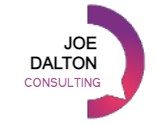Mention content marketing and most people will mistakenly think of it as writing blog posts. They’ll immediately start pointing out why they don’t have time to blog. Or how they don’t have a need for a blog on their website. But content marketing strategy isn’t just about blogging. Although blogging IS a major part of content marketing, often it’s not even the most lucrative of content marketing either!
AN OVERVIEW OF CONTENT MARKETING
So, what is content marketing? It’s the creation and sharing of valuable, relevant and consistent online material, designed to stimulate interest in products and services. This long-term strategy is used to attract a specific audience (based on your client avatar). It is designed to drive them towards a specific action (i.e. buying from you!).
CONTENT MARKETING IS A FUNNEL
Content marketing takes prospects through a funnel. Giving them everything they need to become aware of what their problem currently is. Evaluate that problem. Understand what they need to solve it. And to also come to conclusion that you can provide a solution to solve their problem, along with why that solution is the best one for them.
Every step of this funnel is designed to take them on a journey; taking them through three clear stages – awareness, evaluation and conversion.
CONTENT MARKETING STAGE ONE – MAKING YOUR VISITOR AWARE
The primary aim of content at this early stage, is to help raise awareness of problems your visitors may have. Along with educating them on the fact solutions are available. This stage includes blogging, social media postings, photographs, podcasts, infographics, videos and articles.
CONTENT MARKETING STAGE TWO – GIVING THE MEANS TO EVALUATE
Stage two is all about turning those initial visitors into leads. You’re wanting them to raise their hands and show initial interest, by giving you their name and email address. In return, you’ll give them free resources, such as checklists, educational resources (video training, ebooks, case studies etc.) and webinar events. You’re helping them further understand why a solution is needed, as well as giving them the means to evaluate why they should take advantage of the solutions you’re offering.
CONTENT MARKETING STAGE THREE – CONVERT THOSE LEADS TO CUSTOMERS
Stage three is where you’re asking them to purchase something – ideally with you, rather than one of your competitors. You need to give them enough evidence to make an informed decision – such as testimonials, demos and trials, overviews and comparison sheets.
THE IMPORTANCE OF A CUSTOMER AVATAR
When it comes to using content marketing effectively, the number one thing you NEED to know is your customer. This is why your customer avatar is so important to your business success. It highlights how your customer thinks, acts and feels. Along with what problems they face and what solutions they’re seeking. Making it a crucial part of your content marketing strategy.
It’s only once you know your customer, that you’ll be able to devise the perfect content marketing strategy for your business; one that ultimately leads to satisfied customers and an overall increase in your business profits.
